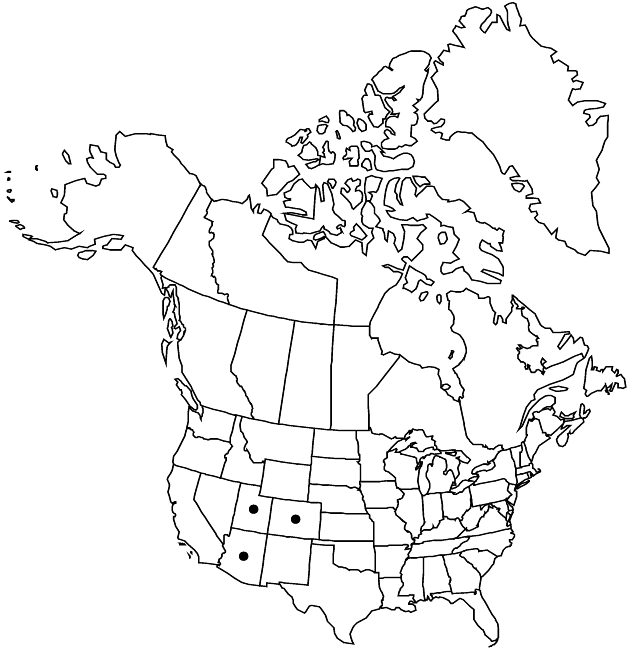Erigeron consimilis
Brittonia 6: 186. 1947.
Perennials, 3–10 cm; taprooted, caudices branched. Stems erect (scapiform), finely strigose, eglandular. Leaves mostly basal (persistent; leaf-bases broadened or not, not thickened and whitish-indurate); blades linear, 4–20 × 0.7–1.5 mm, cauline bractlike or absent, margins entire, faces densely and finely strigose. Heads 1. Involucres 6–8.5 × 11–22 mm. Phyllaries in 2–3 (–4) series, hispido-hirsutulous (hairs relatively thick-based), inconspicuously glandular. Ray-florets 30–55; corollas white or pinkish, sometimes with an abaxial lilac midstripe or drying purplish, 7–11 mm (tube and lamina bases densely strigoso-hirsute), laminae coiling, sometimes tardily. Disc corollas 4.3–6 mm. Cypselae 2.8–3.2 mm, 2-nerved, margins sparsely to densely velutinous-ciliate, faces glabrous; pappi: outer of setae, inner of 15–25 (–35) bristles.
Phenology: Flowering May–Jun.
Habitat: Sandy sites, semi-barrens, salt desert shrub, sagebrush, pinyon-juniper
Elevation: 1600–2100 m
Distribution

Ariz., Colo., Utah.
Discussion
Selected References
None.